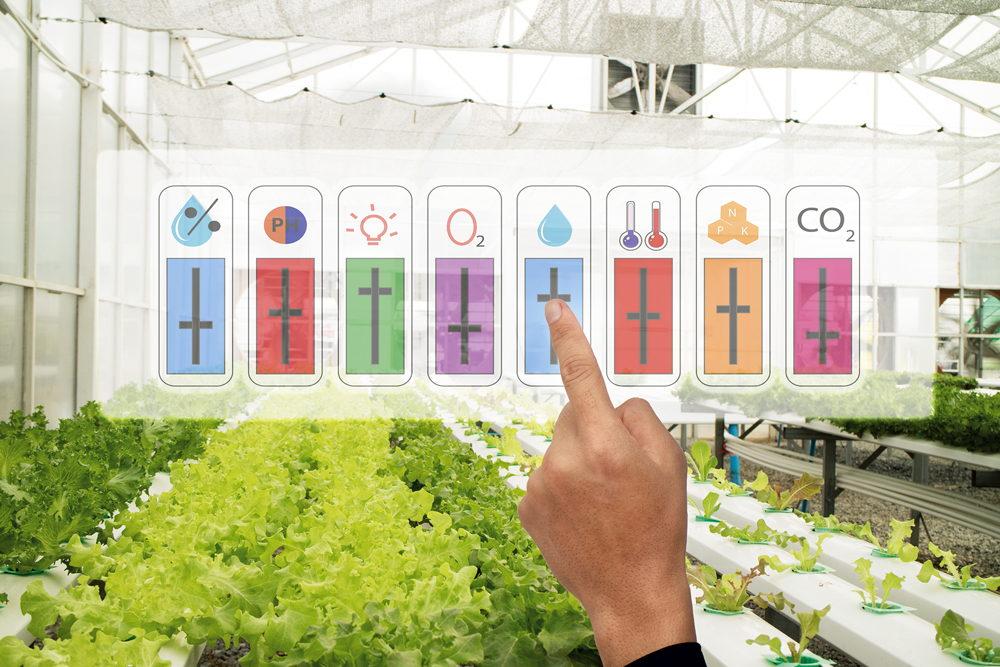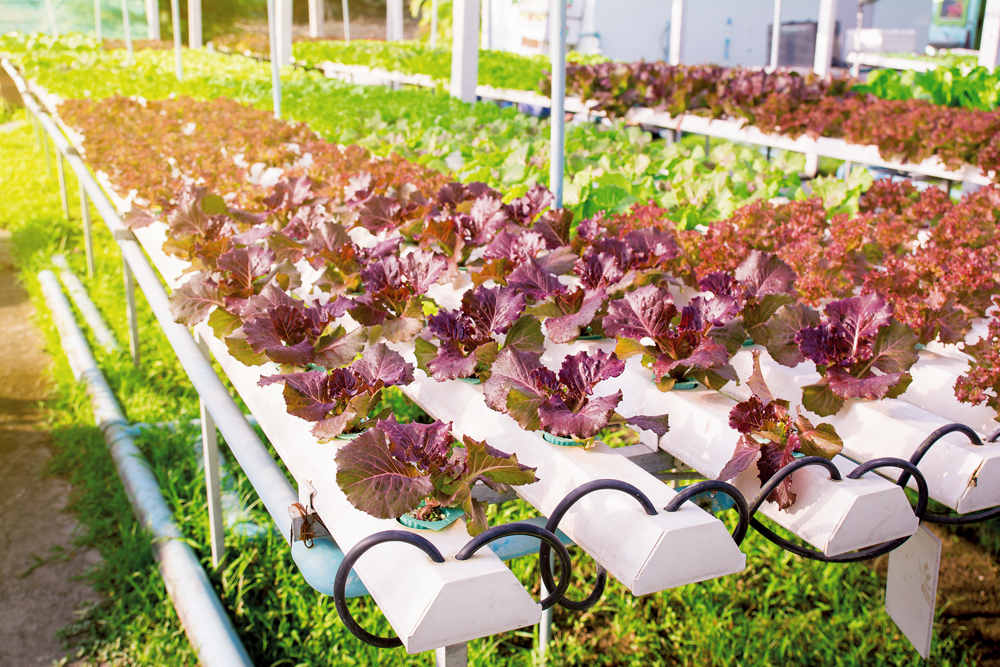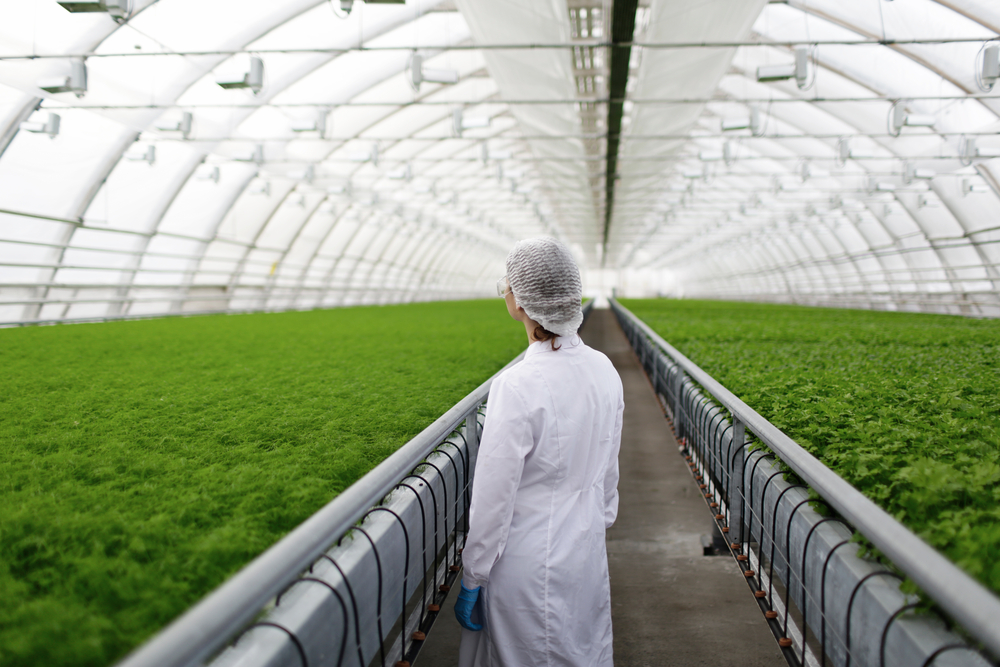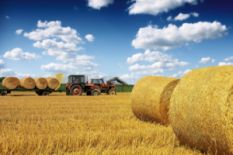The autumn of 2002. A film crew of ICTV TV visits the village of Andrushivka in Zhytomyr Region to make a feature about one of the country's first automated farms. Its highlight is hotel-like service cows enjoy here. Cowsheds are surgically clean. Classical music pieces like Polonaise by Oginski, a nocturne by Chopin and Adagio by Albinoni play in and around the milk room. They are good for cows' nerves, which translates into more milk and even its better quality. Innovations was not a trendy word yet, but they were essentially the spotlight of the feature.
A look at the present shows how naive the views of the future of technology were. Now onboard computers of satellite-controlled harvesters receive instructions to sow plants or spread crop protection agents. Scores of drones control the course of a harvesting campaign and take measurements necessary for higher yield and economic analysis.
Such concept as Normalised Difference Vegetation Index (NDVI) becomes an agronomist's daily routine. Based on NDVI, agricultural company experts study critical areas where soil problems are apparent to various extents. They carry out diagnostics for infection with diseases and pests. Based on the information obtained, specialists draft their recommendations on the correct choice of herbicides or their mixes.
"As far as the market volume [drones and related technologies] is concerned, we have more or less reached the pre-war level of over 50m dollars in terms of foreign currency volumes," SmartFarming Director Artem Belenkov says. "There is even more in the hryvnya equivalent." But this statistics is not complete, Belenkov admits. The volume of the IT agro market is difficult to evaluate. Besides, it is growing at a rather high speed.
The agrarian sector of Ukraine and the adjacent world is in for breakthroughs, compared to which even space technologies are nothing but a music cowshed from remote Andrushivka.
Agro 4.0
To understand where we are going, let us see where we are at the moment. According to estimates by the Ukrainian Club of Agrarian Business (UCAB), agricultural exports in 2017 for the first time generated more than 18bn dollars for Ukraine. The next target is 20bn dollars.
According to UCAB President Alex Lissitsa, there were three reasons behind the "Ukrainian agrarian miracle" of the past decade: 1) adoption of modern technologies adjusted to Ukrainian regional conditions not only in manufacturing but also in processing and storage of output; 2) higher business efficiency thanks intensified manufacturing and economies of scale; 3) change of agricultural management from the collective farm distribution system to a classical business model with clear management structure and cost analysis.
However, now the margin of classical agribusiness is shrinking. There are 100,000 reasons for this. Below are just some of them. According to UCAB Director-General Taras Vysotskyy, the rental price of arable land increased by 104% from 2014 to 2016, and will add another 20% by the end of 2017. Labour remuneration increased by 28% and is likely to go 15% up by the end of 2017. In 2018, this growth will continue because the cost of workforce, especially brainpower in the agricultural sector, grows faster than the market. Climate changes turn into an insurmountable obstacle to the super-income. Thomas Phillips, Senior Underwriter Agro at Swiss Re Corporate Solutions, said in his speech in Kyiv last December that high temperatures cause increased evaporation from the sea and soil. More snow than usual melts, which depletes water content in soil in the summer and during long drought periods. "Because of such weather we will see lower yields," Phillips predicted. "All these factors will have serious implications for agribusiness in Ukraine." To prove his point, he added that agribusiness had become increasingly more volatile in the past seven years.
Charter House Corporate Partners Country Director Inna Meteleva, who was a deputy board chairman at Svarog West Group, zoomed in on the growing problem. Due to higher moisture content, grain needs to be dried, which implies significant spending on energy, for example, gas.
Vysotskyy confirms that additional gas costs are especially notable in corn growing: "It is a fact that climate change brings yield down when classical technologies are used." All this pushes the cost of harvest up. Negative effect is amplified by decreasing product prices in global markets.
Anticrisis measures are incredibly expensive, but inaction will cost even higher. Therefore huge investments in saving bioresources and productive land use are no longer the headache of zealous ecologists alone but also of pragmatic capitalists.
Large agroholdings and medium-sized farms sit on their rakes no more. The issues on their agenda are how to minimize losses and control their spending. Artem Belenkov explained that until recently agroholding managers had mostly been concerned with theft, whereas now the focus is on efficiency.
How is IT changing the priorities of the agricultural market? Oleksiy Pavlenko, chairman of the Ukrainian-Dutch Business Council and former agrarian policy and food minister of Ukraine (2014-2016), has a broader answer: "Costs can be cut and potential yields increased by using drones in agriculture, as well as sensors, satellites for collection of information, innovative equipment and machines capable of measuring the required amount of fertilisers, water and protection agents with high accuracy."
Automation has a huge potential to transform agriculture. It makes farming more effective and easy and while production grows, it can ensure the country's food security and push down imports, as well as feed the nations for which innovations are a distant prospect.
"We should expect the emergence of companies combining the power of sensors technologies, artificial intelligence and machine learning," Pavlenko concludes. "I think the next step in agrotechnologies will include the distribution of software for building direct contacts between farmers and suppliers or customers."
Workforce makes all the difference!
Because of systemic changes in the sector, UCAB President Alex Lissitsa predicts significant personnel shakes. No more than 100,000 people will be employed in Ukraine's agribusiness in the near future. Currently, there are 3.3 million people, according to the Baker Tilly International audit company. But they will shrink under the pressure of innovations rather than mechanical layoffs. This is what Lissitsa calls Agribusiness 4.0. "This is a new issue for discussion by the global agrarian community," he explains.
The issue is new but the trend is not. There were 130 workers per hectare in Soviet times, now there are 20. On average, there are two workers per hectare in the USA and Canada. And these are pairs of hands worth their value in gold, capable and trained.
Applied sciences move from universities into business. Colleges will only be left with fundamental sciences whose scope of study is limited by theoretical knowledge and lab tests.
Large agroholdings already invite students for internship. Five years ago, the Kernel agrogiant founded its own University of International Programmes. Professors from Hochschule Weihenstephan-Triesdorf, University of Hohenheim (Germany), Wageningen University (Netherlands), McGill University (Canada) and others are involved in the project for graduates of agriculture colleges and third-year students from Sumy and Kamyanets-Podilskyy universities. Kernel plans to engage all agrarian universities of Ukraine in the future.
Read: Experts Talks on Financing Agriculture
All agricultural companies in the country are adopting this model of rearing the personnel "for one's own purposes". For example, the Industrial Milk Company annually spends around 10m hryvnyas on support for educational establishments, grants for students, their training and so on. Among agrospecialists who will be in top demand for the company are IT specialists and experts in cartography.
Talking of the promising future, Belenkov suggested that thanks to a marriage of classical agribusiness and new technologies, farm produce made in Ukraine will soon squeeze imports out of supermarket shelves.
Electricity from fields
A side trend is likely to emerge this or next year: agricultural companies, followed later by villages and cities, will start consuming electricity generated in fields.
I am talking about biogas production. In 2017, agroholdings brought a series of biogas plants to high capacity, thus increasing the total capacity of all Ukrainian biogas facilities from 30.3 MW in electrical equivalent to almost 37.6 MW.
That means an increase of over 24% in one year alone. Among the leaders are Astarta-Kyiv, Myronivskyy Hliboprodukt (MHP), and Ukraine 2001. The last one set the record in late December 2017 by taking a new facility to capacity slightly above 5.1 MW. This is only a little less than what a similar facility of the market giant MHP generates, 5.7 MW.
The race continues. In the near future, Ukraine 2001 will triple its biogas capacity and MHP will increase it over four times. Last December the European Bank for Reconstruction and Development decided to issue a 25m-euro loan to Yuriy Kosyuk, the main shareholder of MHP, for the construction of a biogas plant in Vinnytsya Region. The company told AgroDestinations that it would be the world's biggest biogas production facility. By 2020, the capacity of its plants, which will generate electricity out of chicken manure, will have reached 20 MW. The trend is in full swing. This year biogas facilities will be launched by Odesa-based Vimeksim Trading House, in addition to the above-mentioned companies. They will be followed by Gals Agro, which will use Raiffeisen Bank Aval's loans to build biogas plants in Chernigiv and Kyiv regions.
Agrospetsservis Group plans a project in Kirovograd Region and the Danosha agricultural company in Ivano-Frankivsk Region. An absolutely new industry of the 21st century is rapidly developing all over Ukrainian regions.
"Vertical farms"
Big cities will have their share of fun too. Oleksiy Pavlenko updates the picture of the near future with a fresh trend – vertical farming. It is the practice of growing crops in vertical greenhouses. "As urbanisation persists and the number of people in the world grows, this trend is likely to build up," the chairman of the Ukrainian-Dutch Business Council is confident. This agricultural method is booming in Northern Europe. Just Google vertical farms and you will see how smart they are. Vertical farms are located in industrial urban zones to be as close to a distribution market as possible. These farms are already yielding decent harvests while making minimal use of natural resources. They cater to domestic consumption needs.
World in 2050
By 2050, the world's population will have increased by one third. And this is not a distant prospect. Today's school students will have turned middle-aged people. That is, the present generation will certainly live under capitalism. The food consumption market will grow by 70%. Even if we look at short-term prospects, based on the OECD-FAO Agricultural Outlook for 2017, the world cereal consumption will have increased by 13% by 2026, compared with 2016.
China, Pakistan, Vietnam and African countries will remain the largest food consumers for the coming years. According to OECD-FAO, soybean imports to China will increase by 2.6% annually. By 2026, China will account for two-thirds of the world imports of this crop, 117m tonnes. India will boost vegetable oil imports at the same speed. In total, a quarter of the planet population is in these markets. In just eight years, main dairy customers will be developing countries, especially in Asia (50%), Africa (16%) and the Middle East (13%).
If these prospects do not steal your breath, consider changing your job and giving way to the young and ambitious. "With the development of the land market, major investment will be made in agriculture, and an even bigger personnel deficit is likely to appear," Sergiy Marchenko, development director for work.ua, confirms. "So we recommend students to consider agrarian careers. They have a great future ahead."
Author: Paskhover Alexandr








